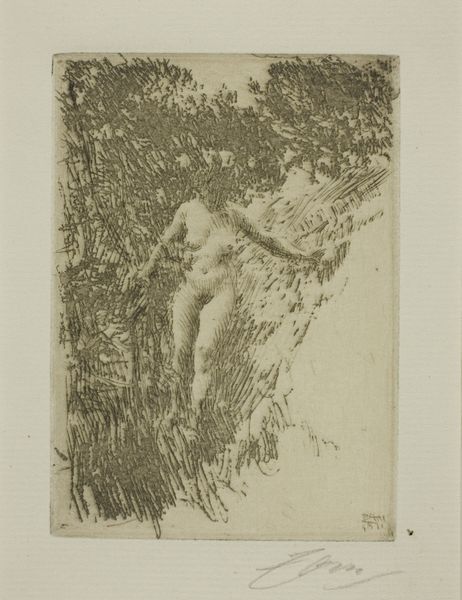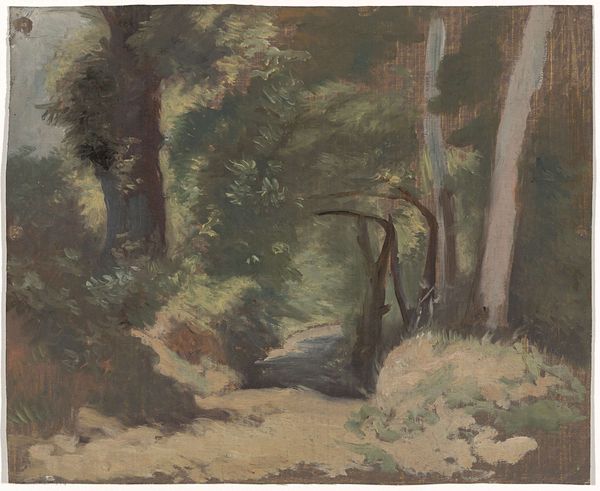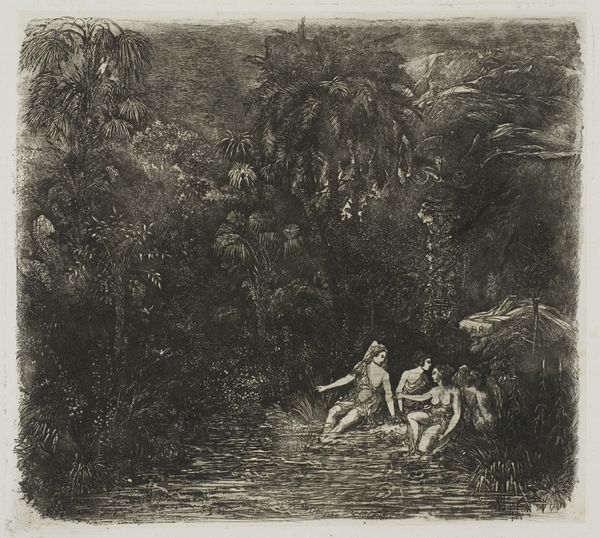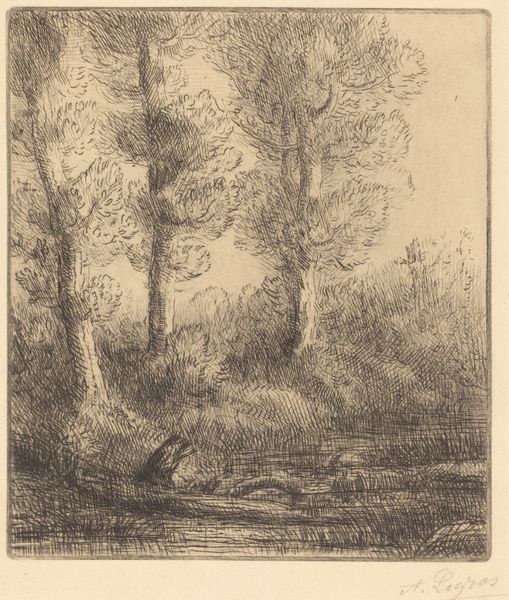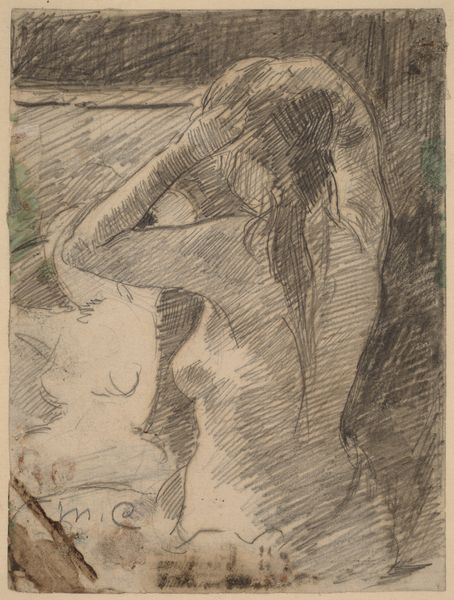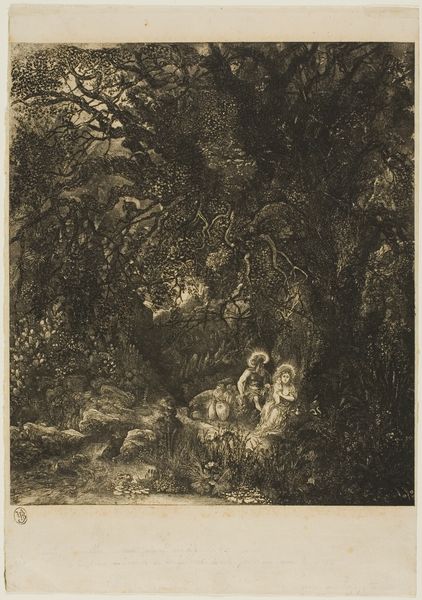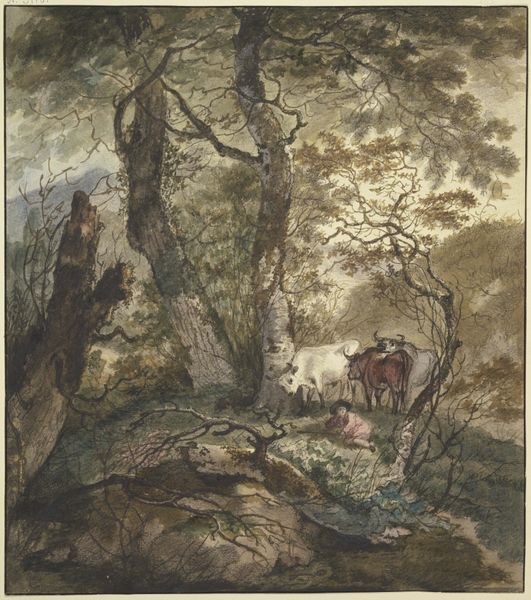
Dimensions: 41.0 x 33.5 cm
Copyright: Public Domain
Editor: So, here we have Arnold Böcklin's "Faun and Nymph in the Woods," painted around 1859. It’s an oil painting. There's a dreamy quality to it; everything feels veiled and just a little…sinister? A vulnerable nymph rests as a watchful faun lurks in the trees. How do you see this piece? Curator: Sinister, eh? I like that. It certainly stirs up something primal. It’s a perfect example of Böcklin’s love affair with mythology and nature, wouldn't you say? That yearning for an idealized, pagan past that never really existed, but boy, does he make you *feel* it. Look at the blurring between the figures and the woods - where does the faun end and the forest begin? Is it just a painting, or a window into a hidden world, always breathing just beyond our own? Editor: I guess that blending does give it a very… alive quality. Like anything could happen. Does the loose style contribute to that feeling? Curator: Absolutely! Böcklin's brushwork isn’t about perfect detail. It's about evoking a feeling, a mood. He wants you to sense the dampness of the earth, the rustle of the leaves. You get this push-and-pull dynamic: temptation vs. innocence, reality vs. fantasy. I wonder, what does it make *you* feel, deep down? Editor: I definitely get that 'something's about to happen' feeling. Like this is a snapshot before some big, maybe dangerous, event. It makes me rethink "landscape." Curator: See? He’s got you. And isn't that what great art is all about? It invites you into its world, then refuses to let you leave unchanged. Editor: I'll never look at a forest the same way again, that's for sure. Thanks for making that so clear.
Comments
No comments
Be the first to comment and join the conversation on the ultimate creative platform.
